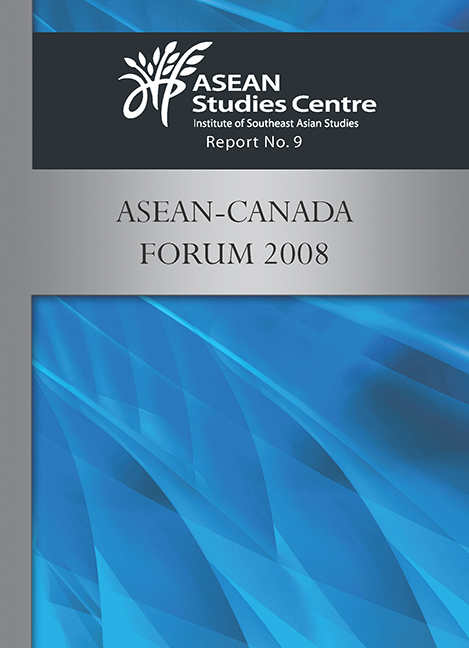Book contents
- Frontmatter
- Dedication
- Contents
- Introduction
- I Regional Economic Integration: ASEAN and Canadian Perspectives
- II Background Papers
- 1 AFTA–NAFTA: Trade and Investment Issues
- 2 Trade and Investment Issues in ASEAN Economic Integration
- 3 Institutional Development in ASEAN
- 4 Governance Issues in NAFTA
- 5 Different Approaches to Dispute Resolution under ASEAN
- 6 Dispute Resolution under NAFTA: Evolution and Stagnation
- 7 Winners and Losers in ASEAN Economic Integration: A Perspective from Vietnam
- 8 Winners and Losers in International Economic Integration: The Distributional Effects of NAFTA
- 9 Cross-border Labour Migration in ASEAN: Issues and Challenges
- 10 Labour Market Integration within NAFTA
- Annex I: Programme of the Forum
- Annex II: List of Participants
- Annex III: Rules-based Governance
10 - Labour Market Integration within NAFTA
from II - Background Papers
Published online by Cambridge University Press: 21 October 2015
- Frontmatter
- Dedication
- Contents
- Introduction
- I Regional Economic Integration: ASEAN and Canadian Perspectives
- II Background Papers
- 1 AFTA–NAFTA: Trade and Investment Issues
- 2 Trade and Investment Issues in ASEAN Economic Integration
- 3 Institutional Development in ASEAN
- 4 Governance Issues in NAFTA
- 5 Different Approaches to Dispute Resolution under ASEAN
- 6 Dispute Resolution under NAFTA: Evolution and Stagnation
- 7 Winners and Losers in ASEAN Economic Integration: A Perspective from Vietnam
- 8 Winners and Losers in International Economic Integration: The Distributional Effects of NAFTA
- 9 Cross-border Labour Migration in ASEAN: Issues and Challenges
- 10 Labour Market Integration within NAFTA
- Annex I: Programme of the Forum
- Annex II: List of Participants
- Annex III: Rules-based Governance
Summary
Introduction
Many economists, including the famed Robert Mundell, have made strong trade-related pronouncements to the effect that trade is a substitute for migration. This proposition was in the forefront of many United States policy-makers' minds when they argued for the admission of Mexico into the then Free Trade Agreement between Canada and the United States. If this proposition were true in the North American Free Trade Agreement (NAFTA) context, then it could be argued that increased trade in goods between Mexico and the United States, and presumably Canada, would permit factor price equalization and remove the incentives for unskilled Mexicans to migrate north for jobs. Of course this proposition only holds under special conditions, and policy-makers were more circumspect when the mobility section of the NAFTA agreement was signed. It is important to note that mobility provisions within NAFTA were concluded after the core of the agreement was signed to avoid the contentious issue of granting mobility rights to the unskilled. In fact, complete labour mobility was only granted to the highly skilled under the NAFTA accord, and initially only between two signatories, Canada and the United States.
Thus, even in the very constrained setting of NAFTA, United States and Canadian policy-makers imposed a two-tiered mobility regime on Mexico, their new less developed partner.
Model and Theory
In this paper, I will outline a theoretical model drawing on available econometric evidence describing mobility within NAFTA to reflect on the eventual equilibrium size of the flows of both skilled and unskilled immigrants between NAFTA trade partners. This analysis will allow us to determine the equilibrium wage difference between NAFTA countries at unequal levels of development and the degree of labour market integration when migration halts. The equilibrium income difference under which migration halts will be termed the “reservation wage gain”. If this reservation income gain is small, then high levels of immigration will occur between states with unequal levels of development, and vice-versa, and lead to fully integrated labour markets.
A second and equally important concept to assess labour mobility within the NAFTA context is the “border effect” whereby, given any distance or potential income gain from movement, migration will be lower if the migrant must cross a border, even if mobility is completely unfettered between two international points.
- Type
- Chapter
- Information
- ASEAN-Canada Forum 2008 , pp. 236 - 250Publisher: ISEAS–Yusof Ishak InstitutePrint publication year: 2010



